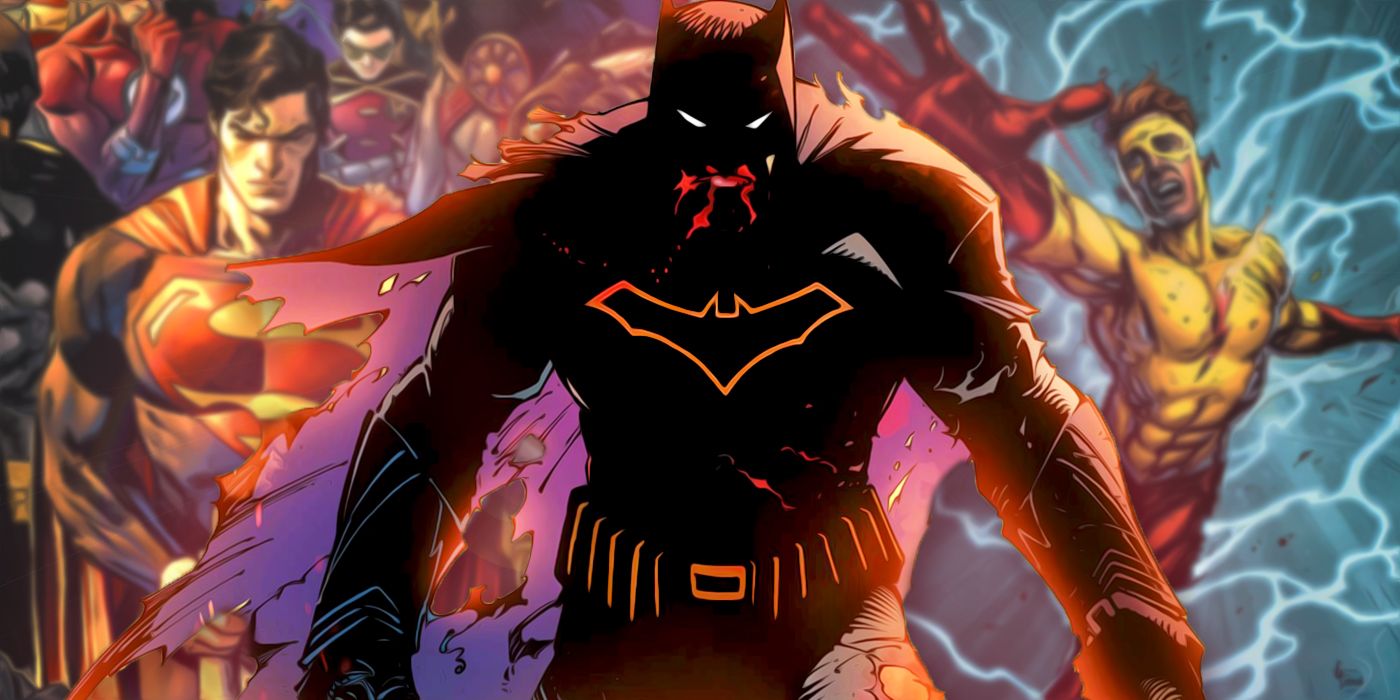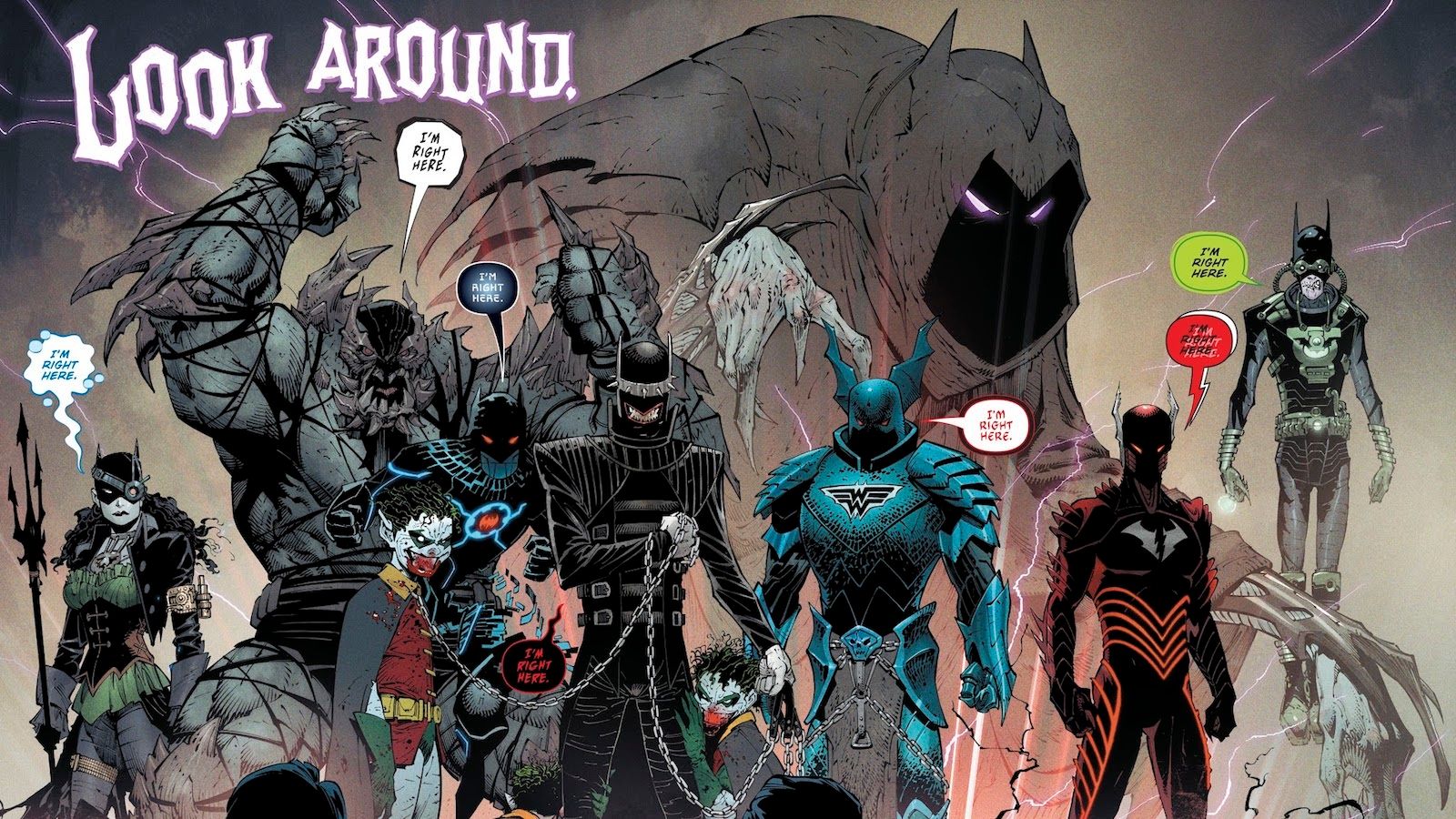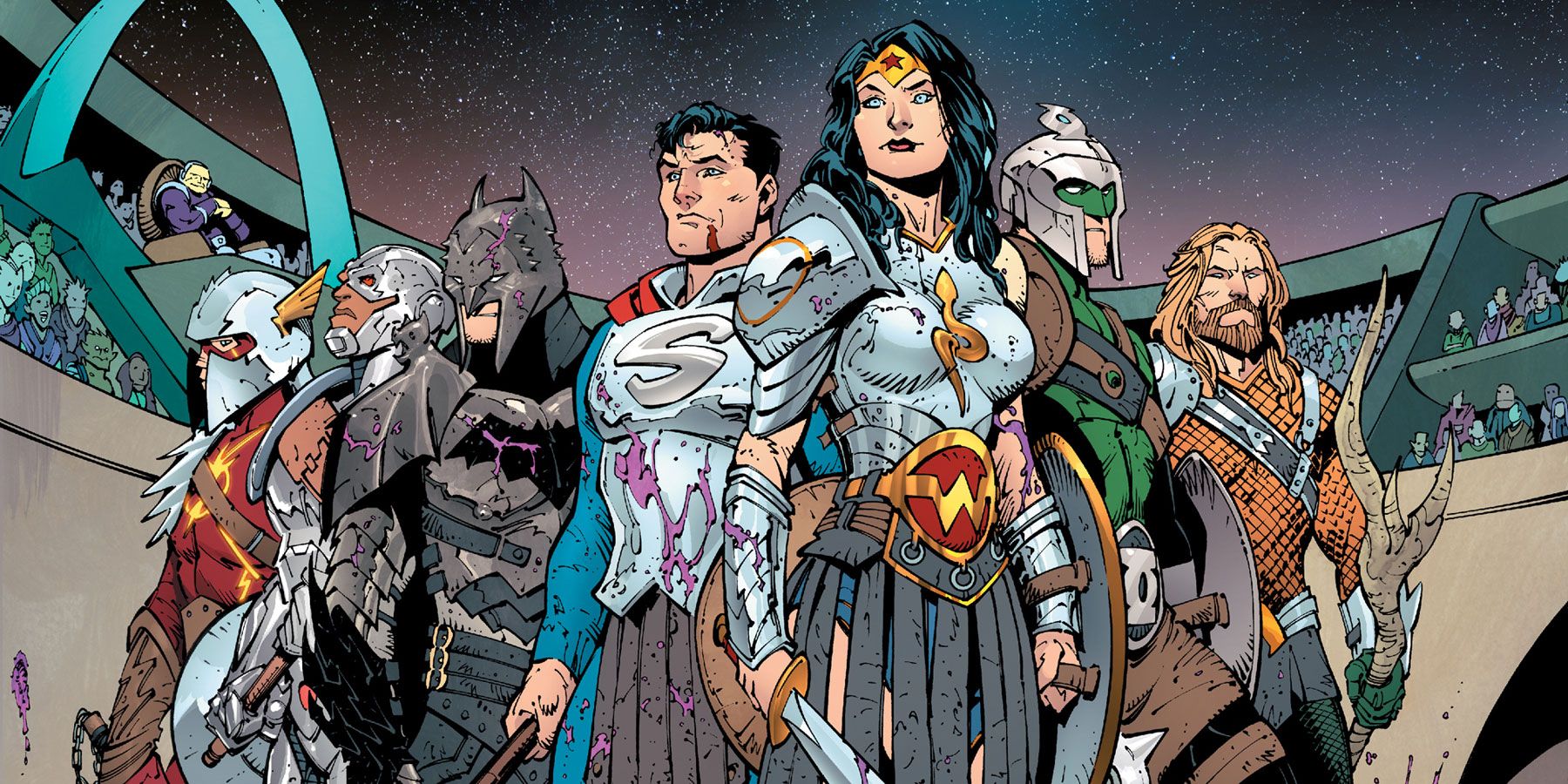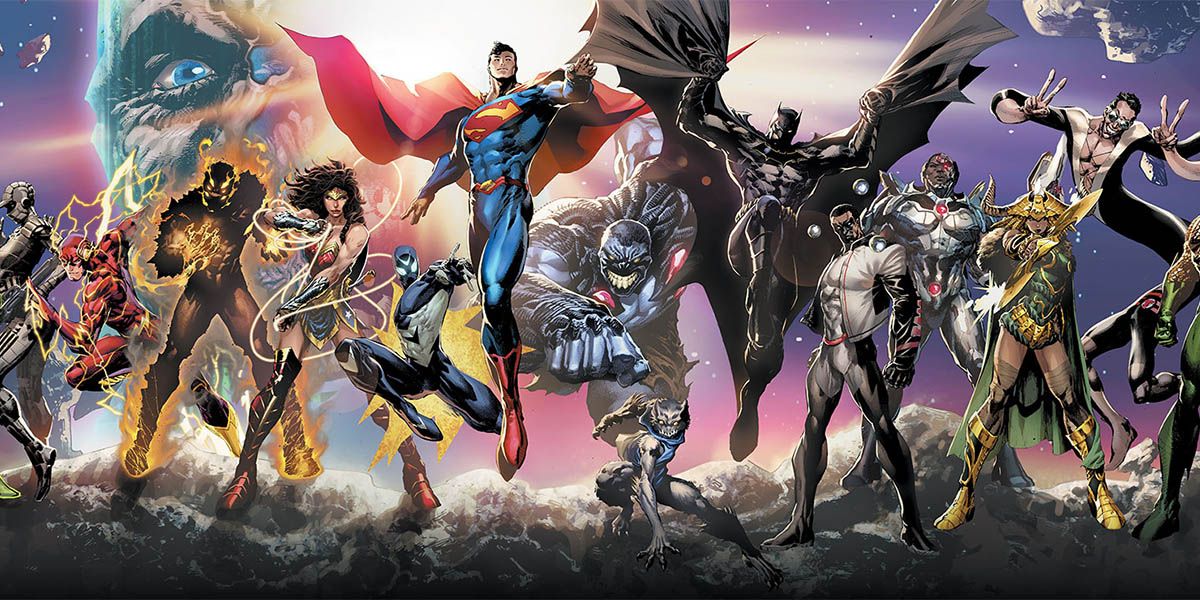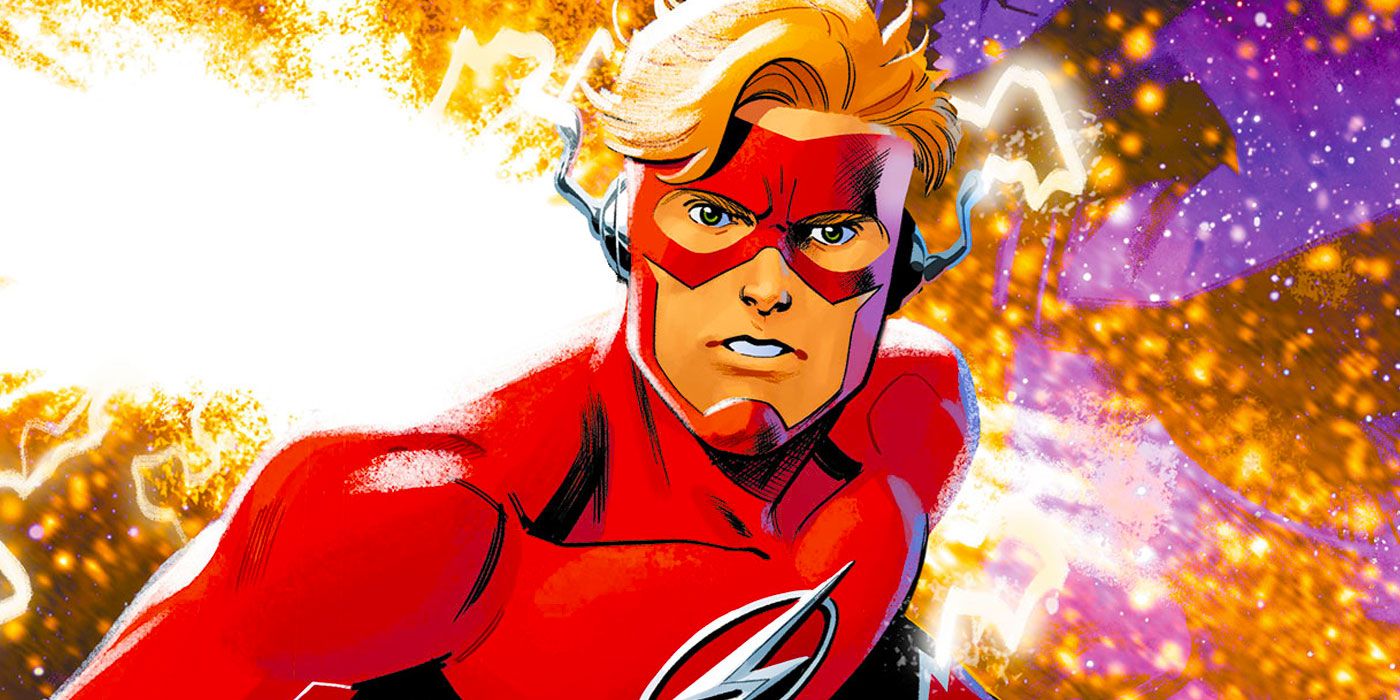At first, Dark Nights: Metal seemed as if it would be a fairly standard DC annual crossover event storyline, albeit one very much inspired by the success of team Scott Snyder and Greg Capullo's acclaimed New 52 run on Batman. The fallout, however, has been beyond anything that fans have imagined.
Numerous storylines, comic books and characters have come out of the resulting plot threads of Metal, and existing ones are now more tightly interwoven than ever. Even other prominent recent arcs, such as Heroes in Crisis, DC Rebirth and Doomsday Clock don't exactly compare. So how has Dark Nights: Metal, more than any storyline since 2011's Flashpoint, changed the face of the DC Universe, and how will it continue to do so going forward?
RELATED: DC Universe Online: Dark Nights Metal is Coming to the Nintendo Switch
Metalocalypse
The dark, twisted multiverse introduced in Metal also introduced The Dark Knights, twisted metahumans who were combinations of Batman and fellow members of the Justice League. As well as all having great designs, these characters were also given their own one-shot comic books, exploring their origins alongside the regular Metal miniseries. Numerous other books crossed over as Metal tie-ins, such as The Flash, Teen Titans and Suicide Squad. While tie-ins are nothing new with event comics, the fact that these new characters were also given their own brief books was a sign of how influential the event would soon become.
The general tone of the series also made it an instant standout, being inspired by and resembling works from Heavy Metal Magazine. The Dark Knights, as well as the multiversal scope of the series, also give fans a taste of the various dark Elseworlds that were popular at DC in the 1990s.
Who's Who in the DC Universe
The story of Metal also sought to more cleanly connect the many disparate elements of the DC Universe. Various weapons appearing throughout the story involve different members of certain characters' supporting cast. This includes the Greek gods for Wonder Woman and the wizard Shazam for a certain Big Red Cheese. Hinted at in the title, the mysterious Nth metal, usually associated with the character Hawkman, is also a big part of the story.
The series also involves characters from Neil Gaiman's legendary series The Sandman, making Metal the first time that those characters appeared in the mainstream DC Universe since before Flashpoint.
The New Age of DC Heroes
The end of Metal also saw several new books launched under the banner of The New Age of DC Heroes. Some of these books, such as The Terrifics and New Challengers, involved new stories about classic DC characters like Mr. Terrific, Plastic Man and the Challengers of the Unknown. Other books featured brand new characters, such as the deadly assassin known as The Silencer and the dimension-hopping thrillseeker Sideways. Many of the characters featured even get their powers through the events of Metal.
Another important story line within Metal concerned the identity and immortality of Hawkman. A new Hawkman ongoing book was subsequently launched, spawning out directly from that book's events, which sought to consolidate some of the character's confusing backstory. There's also The Sandman Universe and Tales of the Dark Multiverse series, with the former happening directly afterward.
Testing Metal
Metal's success and influence is incredible as-is, but it's even more astounding due to the lack of similar effect from other current DC events. In the case of Heroes In Crisis, much of that series' momentum was quickly undone due to the controversial elements of its story. While the upcoming series Flash Forward will spin off directly from it, that's still nothing compared to the entire line that Metal led to. If anything, that series exists as damage control to the reception of of Heroes In Crisis.
In the case of DC Rebirth, it was more of a narrative banner than a concrete story. It exists to this day as similar damage control against some of the more controversial elements of DC's New 52 initiative, which spawned out of Flashpoint. In fact, writers have many times simply used Rebirth as a way to bring back or disregard different elements of characters' histories over the years, without any sort of unified reason for it like in the cohesive Metal.
Doomsday Clock's influence remains to be seen, as does that series' conclusion. The DC Universe hasn't been able to organically respond to the events of Doomsday Clock due to its constant delays, which may have very well affected story decisions in both Heroes In Crisis and Metal. Similarly, it very much exists as a continuation of the ideas behind DC Rebirth, with a seeming promise at the end to restore much of what fans loved about the pre-Flashpoint DC Universe.
Fans don't have to wait, however, to see how much Metal has irrevocably changed the DC Universe. Not only has it brought new heroes, but also new villains. The Batman Who Laughs, a Joker/Batman hybrid introduced in Metal, is a key figure in the current event story Year of the Villain. The newer heroes continue to appear throughout various comics, and some, such as Silencer, have already appeared in other media. Metal has cast some dark nights over the DC Universe, and the forecast doesn't seem to be changing.

